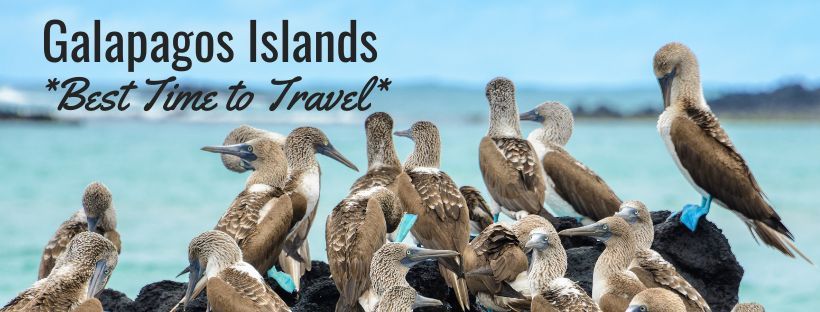
The archipelago can be visited year-round, and the best time to travel to the Galapagos Islands depends on your preferences for weather, wildlife sightings, and crowd levels. Here's a breakdown of the seasons and considerations for traveling to the Galapagos Islands.
1. Peak Season (June to September, December to January)
Best Time: June to September
Considerations: The months of June to September are considered the peak season in the Galapagos Islands. During this time, the weather is generally dry and cooler, with average temperatures ranging from 20 to 25°C (68 to 77°F). The waters are cooler, nutrient-rich, and offer excellent visibility for snorkeling and diving. It's also a prime time for wildlife encounters, including nesting birds, sea lion pups, and the famous Galapagos giant tortoises. However, this period tends to be more crowded, and prices for accommodations and tours may be higher.
2. Shoulder Seasons (April to May, October to November)
Best Time: April to May
Considerations: The shoulder seasons of April to May and October to November offer a good balance between weather, wildlife, and fewer tourists. The temperatures are slightly warmer than the peak season, ranging from 23 to 28°C (73 to 82°F). The waters are still pleasant for swimming and snorkeling, and you can witness the courtship and mating behaviors of various species. Additionally, this period may offer better availability and lower prices compared to the peak season.
3. Wet Season (December to May)
Best Time: January to May
Considerations: The wet season in the Galapagos Islands occurs from December to May, with January to May being the rainiest months. While it's considered the off-peak season, it offers its own unique experiences. The landscapes are lush and vibrant, and it's a time of nesting and breeding for many species. The waters are warmer, perfect for swimming and snorkeling. However, rain showers can be more frequent, and the ocean currents may affect visibility for diving.
It's important to note that wildlife sightings can vary throughout the year, as different species have their own breeding, nesting, and migration patterns. Additionally, Galapagos National Park regulations limit the number of visitors to each site, ensuring a controlled and sustainable tourism experience. When planning your trip, consider factors such as your interests, budget, and preferred level of crowds. It's also recommended to book your Galapagos trip well in advance, especially during the peak season, to secure your preferred accommodations and cruises.
Start designing the trip of your dream: get in touch with your Galapagos Travel Expert now!